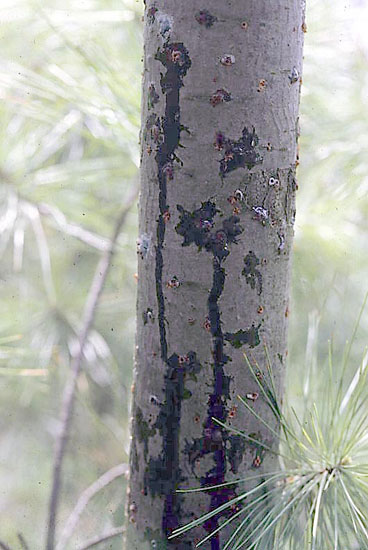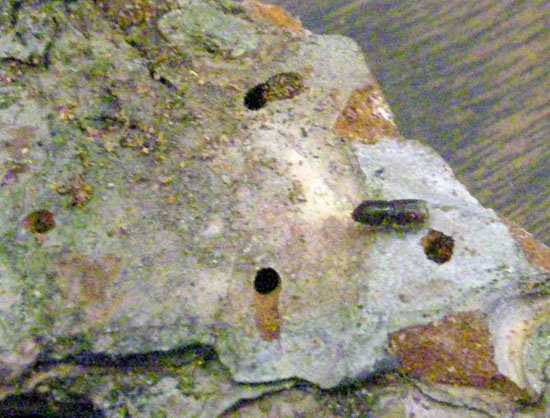Issue 16, September 14, 2009
Pine Engraver
We have had several reports this summer of bark beetle damage to Eastern white pine. This is apparently caused by the pine engraver, Ips pini. This bark beetle also attacks other pine species in Illinois. Damage appears as brown sawdust-like material (frass) at pinhead-sized holes with pitch running from them down the trunk. The tree is usually in decline with browning needles.

When a pine tree goes into decline, it is commonly attacked by bark beetles. A declining tree emits chemical compounds that the bark beetles can detect, and they fly to the tree. However, bark beetles that attack pines commonly attack the healthy trees on either side of the one in decline. In the process, they transmit blue stain fungi to the healthy trees which can cause those trees to die. In stepwise fashion, the bark beetles and fungi can kill an entire row of trees after several years. For that reason, it is commonly suggested that a pine tree in decline in a row be removed promptly to help keep the trees on either side from being attacked.

Bark beetle adults emerge through pinhead-sized holes from March to October. There are usually three to four generations per year. If the tree shows symptoms of decline between March and October, one can assume that the healthy trees on either side were attacked and removing them is usually a good practice. Spraying for bark beetles is tenuous at best. They are difficult to control because they emerge at various times through the growing season. That would require several sprays per year, with limited likelihood of success.--Phil Nixon
Author:
Phil Nixon